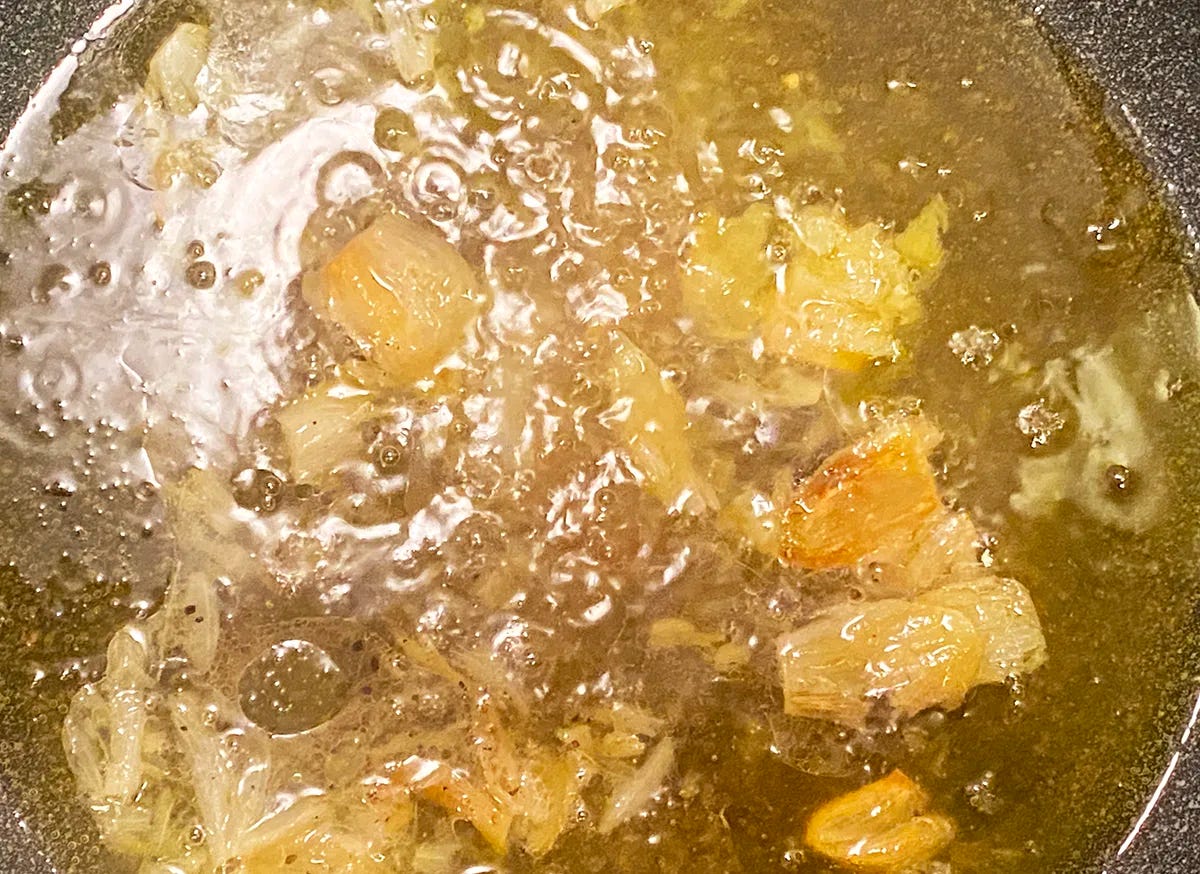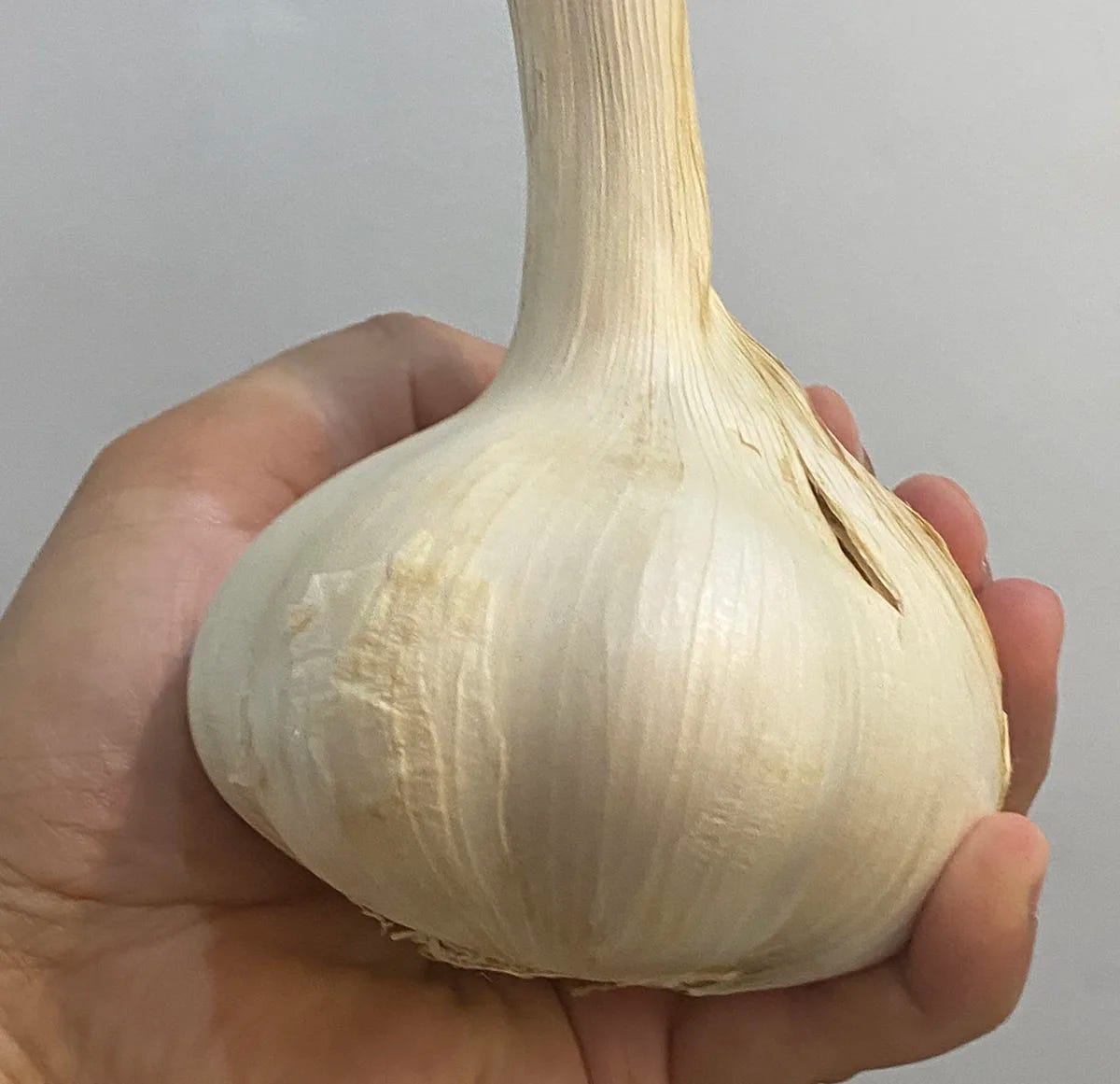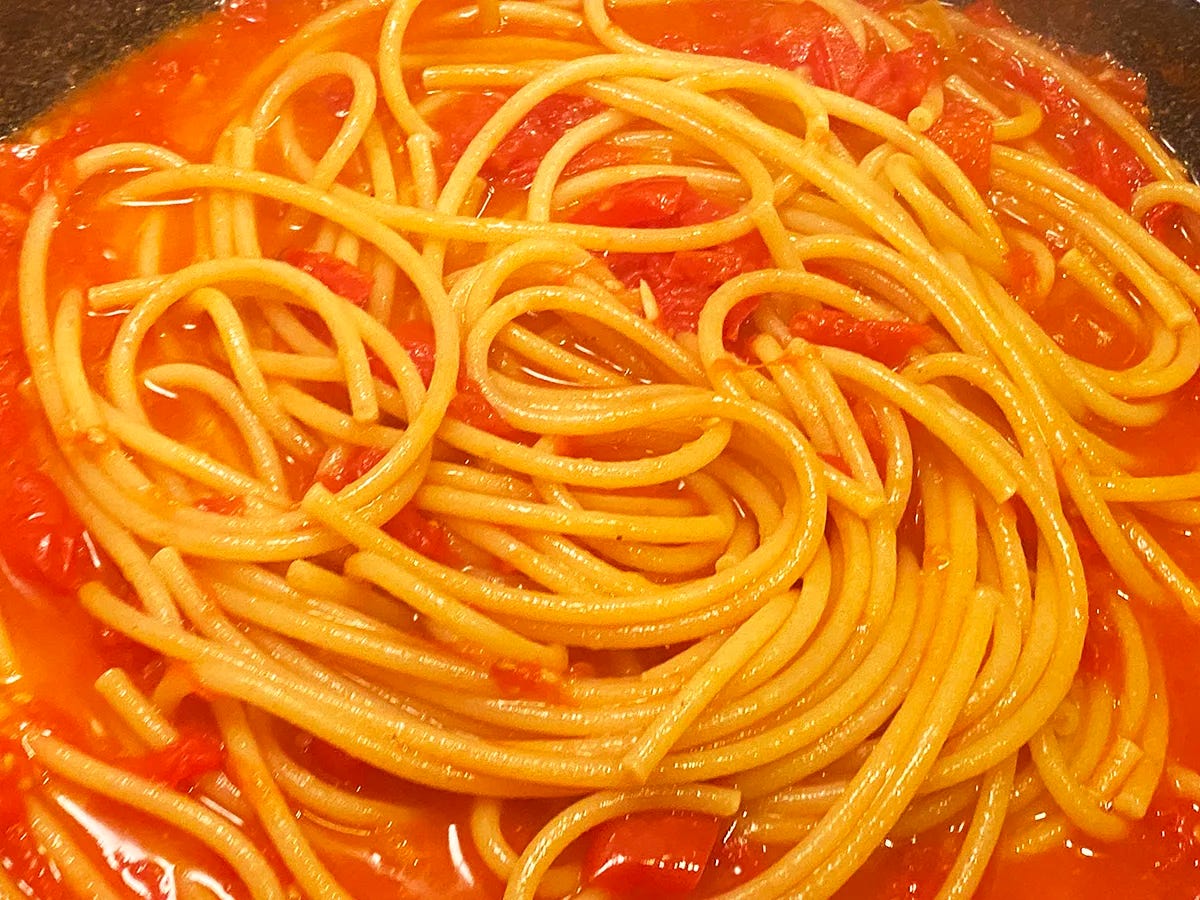Food Notes: 8/12
Garlic, Swiss cheese, Kewpie, Lemon Ice, and more!
This is a giant bulb of garlic.
Elephant garlic, as this giant bulb is known in English, is an allium, like garlic and onions. It’s scientifically slightly different than the regular smaller garlic bulbs, and the flavor is lighter, less peppery, and almost sweet.
I came across the above bulb in Tuscany at a farmer’s market where I mistakenly asked for aglio. The market vendor corrected me that it was called Aglione. While I wasn’t exactly sure what I was going to cook with it, I knew I needed to try this giant bulb.
It turns out that pici all’aglione is a common Tuscan pasta recipe, and my wife and I decided to try to replicate it.
Pici is a pasta shape typical in Tuscany. It’s a hand rolled vermicelli, like spaghetti, but a bit fatter and more wobbly looking. Pici is usually made only from flour and water. Some variation of Pici was on the menu of literally every restaurant we ate in while visiting Tuscany earlier this summer.
The first thing we needed was the aglione, the elephant garlic. Luckily, I knew we could secure some from the Orleans farmer’s market on Cape Cod. That’s where we’ve found Benjamin Chung of Caroline’s Corner. Chung’s stand offers some 30 varieties of garlic. (He also wrote a book about growing garlic on the Cape). I had previously purchased a bit of Russian Red garlic, a peppery bulb he suggested would go well with meat. I slathered it on some steaks.
Chung also offered me some advice on a few cloves of garlic I had shoved into the ground last winter. His advice: it was time to harvest. I had some extra garlic cloves on hand in January, and I simply stuck them in the raised bed expecting little or nothing to come of them. Instead, we found a half dozen fully formed garlic bulbs.
Anyway, we procured our aglione bulb from Caroline’s Corner. His wasn’t quite as tightly wrapped as the bulb I found in Tuscany, but it would have to do.
What makes pici all’aglione special in preparing the garlic. The finely sliced garlic needs to cook at a very low temperature so that it can melt into the oil. Garlic browns and then burns easily as anyone who’s turned their back on a pan of hot garlic can attest. My wife cooked the garlic slowly on an electric stove for about 30 minutes.

My wife crushed up the garlic with a fork, but really it didn’t need much work because of the long, slow cooking process. We then added fresh tomatoes and simmered it together for a few minutes.
We had the best intentions of making our pici from scratch, but by the time we were cooking dinner u, we decided it was better easier to just boil some bucatini. Sure, this is the wrong pasta shape entirely, but I’m at a loss to think of a dish where bucatini isn’t an improvement.
This was a simple tomato sauce but one that highlighted the sweet peppery flavor of garlic. Light and acidic, it was the perfect summer evening pasta, and we are already plotting a return to the farmer’s market for another enormous aglione bulb.
Calamity of the Week
The British butchered a cacio e pepe recipe, and Italy isn’t happy. A British food website incorrectly included Parmigiana instead of Romano cheese and added butter to the simple recipe of cheese and black pepper. The British recipe is better known as pasta al burro, a staple of Italian children, which actually makes sense once you’ve tasted traditional British food.
The Latest
The Restaurant Row That Almost Was
Vanderbilt Ave in Brooklyn incubated some of the borough’s trendiest restaurants, but rising rents and falling foot traffic has led to some big closures. Maybe reducing all those extra pedestrians wasn’t such a great idea after all?
The Hole in the Swiss Cheese Market
Americans buy up 11% of Swiss-made cheese, and new tariffs on Switzerland are expected to have a big impact on sales. It’s not just the hole-filled cheese Americans call “Swiss cheese,” but includes products like Gruyère. All this talk of cheese makes me think there should be a dedicated cheese newsletter.
Return of the Game Hen
In my early childhood, I thought serving a tiny whole chicken was the fanciest meal you could think of. Cornish hens became a popular mass market luxury in the 1970s and 1980s, but then sort of disappeared. Andee Gosnell at Food & Wine takes a look at why, and the reasons why this petite luxury is making a comeback.
From America to Japan and Back Again
Kewpie Mayonnaise is one of those quintessentially Japanese flavors, but it wasn’t always. The brand is everywhere now. I’ve even introduced it to my father, who loves a good mayonnaise, but had never had Kewpie until I brought a bottle home from Brooklyn. Anyway, Cathy Erway looks at the history of the brand, and how it became synonymous with Japan, over at Taste.
Chili’s Is Hot, Hot, Hot
You never would have guessed that the hottest dinner reservation in the country is the mid casual dining chain Chili’s. For much of my youth, Chili’s was that sad, stand-alone restaurant surrounded by the parking lot for a mall. But a new management team took over cutting down the menu (who wants Chili at a place named Chili’s anyway?), and becoming a TikToker’s gooey, stretchy, cheesy dream. Dan Kois at Slate looks into the turnaround of America’s most forgettable chain restaurant.
Eater Has More Layoffs
Food media got a little bit thinner with Vox conducting another round of layoffs at Eater. Previous layoffs had already decimated food coverage at the local level, but the site rolled out a refresh of the national homepage and a new Substack that seemed to indicate things were stabilizing. But with even more layoffs, there’s a lingering question of who is left to create content for the sites?
A History of Lemon Water Ice
Serious eats takes a look at Philadelphia’s classic, Water Ice, or as they say there, wha-duh ice. This is basically a reminder that I’ve spent the last six months working on a history of New York City’s Italian Ice just in time for summer… This is a great time to say if you like reading food histories, paying subscriptions fund food writing.
Around The Stack
Alexis Benveniste at Extra Credit has a list of pizzerias that have been recommended to her. We rate this list a B+.
Extra Credit also put out a list of Froyo joints, but somehow overlooked Tasti D-Lite.
Alison Roman dropped a new A Newsletter with a zucchini soup recipe.
Former Eater Editor Serena Maria Daniels launched Midwest Mexican with the promise of more food writing.
Cheap (audio)book Alert!
My audiobook publisher, responsible for turning Red Sauce into a book you can listen to, is running a promotion for half off through September.





